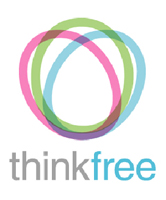This post is in memory of Marc Orchant, an amazing friend, father, and geek, whom I will miss dearly. Marc was supposed to participate in this discussion. His unexpected passing has us all devastated. Our prayers and support are with his family.

Social networking, and social media specifically, have been painted as the new marketing landscape for businesses to engage with their communities of customers wherever they congregate.
In my view, we’re starting to hit a ceiling of discussion versus execution and practicality.
I believe that we’ve theorized enough. There is certainly no shortage of “experts” who can point to “why” Social Media should work for business and improved communications, however, there IS a shortage of people showing others “exactly” how to do it, how to measure it specifically, and which tools of the trade work most effectively for individual campaigns.
It’s time to divide the market of Social Media experts so that we can grow as a group of doers, not just thinkers.
While I will always look to the future to help others evolve, I will also share what I learn and what it means to PR, marketing, sales, and business branding. This way the information can be analyzed and redeployed within – specific to the goals and culture of the company and the team.

Jonathan Crow of ThinkFree recently conducted “The Great Social Experiment” where he tested and practiced the art of social networking as a strategy for helping his company join the conversation and in turn, evaluate its business implications for doing so. The goal was to examine whether his engagement would increase both ThinkFree’s and his professional network, gain market intelligence both on product as well as the industry as a whole, and expand the company’s market outreach.
Basically, Crow, like many other marketing professionals, are trying to find out how Social Media can help businesses grow and whether or not conversations have real world business benefits. A side note, I would add, is that I wonder if his participation also affected and contributed to his personal brand.
Now, ThinkFree is an interesting company to profile because at the end of the day, it compete s against Microsoft Office, Google Docs, as well as other hot Web 2.0 companies. No easy task indeed.
ThinkFree offers an online/offline office suite that is completely compatible with MS Office. The company also created a Social Network of its own, ThinkFree Docs, which is basically a community built around discovering and sharing documents and building a network around content and content creators.
His first step was to jump in.
Crow targeted the following networks:
ThinkFree Docs
digg
del.icio.us
Facebook
Pownce
Technorati
Reddit
Twitter
Jaiku
Newsvine
Flickr
Plaxo Pulse
StumbleUpon
Yahoo!360
MySpace
Friendster
LinkedIn
hi5
orkut
While some of Crow’s targets are right on, others are secondary or even tertiary for accomplishing his goals – just by knowing the culture of each community from experience. However, this is his experiment, so what he learns is important to everyone else who may or may not have jumped in yet and to what extent each community applies (or doesn’t) to their business. He represents many who are actively seeking ways to engage and/or how.
Crow points out, “It feels like I just went into a single’s bar and shouted, ‘will somebody be my friend!’”

He continues, “Who is listening and are we talking in an echo chamber? The answer has been a little mixed. Yes, I have met new people, and am having new conversations. Is it as much as I was expecting or hoping for? No. But the lesson I am taking away from this is that if you do want to build new contacts that can help you, and that you can help, it takes time. Social networks are not a magic formula…Like in the outside world, it takes time to get to know people and develop relationships that can lead to meaningful action. I guess I fell into the trap of looking at these resources as a commodification of friendship. And, we really need to break out of that mentality – myself included.”
Jonathan’s observation is perhaps one of the most common realizations of any good and optimistic marketer. And, this is exactly the point where the Social Media market and its practitioners start to fragment.
Jonathan however, is already a lot further along than most. He’s engaging and writing about his experience. He’s calling out to others to examine his participation and to offer advice, insight, and feedback so that he can engage more effectively.
Many companies and Social Media consultants dramatically underestimate the resources, time, dedication, and passion it takes to engage and cultivate relationships across multiple communities. It’s just not the same for any two networks.
However, Jonathan participated and contributed to the communities he wished to engage genuinely. He did not sit on the sidelines; he shared, learned, observed, and also emerged with real world feedback.
For example, in part three of his series, Crow discusses the different classifications of social networks he observed during his experiment and offered advice for business professionals looking to also jump in.
Aggregators
These pull together feeds from other profiles and sites, keep track of what you and your contacts are doing. Great examples of this are: Flock (as I mentioned already), Plaxo, and Pownce. Somewhat Frank has a great list.
Connectors
These sites connect people, groups, networks, make suggestions based on profile information. The best example is LinkedIn, but obviously Facebook, and MySpace.
Feeders
These sites feed data that is then used in other sites. Typically media based, examples would be YouTube, Flickr, Google Maps, iLike and ThinkFree Docs.
Publishers
These “sites” are where
peop
le come for their entertainment or information. Twitter, Jaiku, and obviously YouTube, ThinkFree Docs, Flickr, etc.
His advice:
1. Start with the sites that best do contacts.
2. Connect with others. Expand your network
3. Get your aggregator sites going.
4. Publish away. Get involved. Don’t spam!
Crow’s experiment continues and it is both a looking glass into real world obstacles and a crystal ball that will reveal where true opportunities reside and in turn, will define and shape realistic expectations and associated metrics.

Crow summarized, “In the end my expectation of social networking bringing thousands of friends and generating enormous buzz was obviously misplaced. What I found is that it requires just as much effort (maybe even more) as blogging, newsletters, and traditional PR tools (such as email;), but as a marketing manager you need your company to be included in the conversation wherever that conversation occurs. Increasingly those conversations are happening in social networks. It is not an either or proposition. You have to go through traditional channels and these new tools.”
Jonathan is not alone. He has many peers who are wondering what to do and to evaluate if their engagement is on track.
He believes that there’s something in this story for everyone, and I think he’s right.
Therefore, Crow has created a roundtable of those active in the Social Media landscape to offer feedback, commentary, constructive criticism, and advice for the good of all marketing. Those joining the conversation are Chris Brogan, Aaron Brazell, Cathryn Hrudicka, Doug Haslam, and me.
The discussion will be based on several questions posed by Jonathan:
1. Did I devote enough time to the exercise? More to the point, where should social networking be placed in terms of marketing priorities? Does this change for companies that are more or less mature?
2. How should we be judging the outcomes from social networking activities? Are there tools you recommend?
3. Is social networking the right tool for the tests I created? Are my expectations of social networking in line with what it can do? What is social networking best geared to address?
4. How much of getting social networking to work is the contacts you bring with you? How aggressive should one be in reaching out to new contacts? Should I, for instance, try to befriend Chris Anderson even after I have composed a note meant to appeal to what he is interested in?
5. How can I build better mechanisms into the framework to increase feedback?
You can follow the conversation here.






I totally agree Brian,
Charlene Li had tweeted today asking what will 2008 bring for marketers? I think that it’s going to start separating the talkers from the doers.
The only way to answer the question ‘will it work’ is to engage.
And this statement is totally true too:
Many companies and Social Media consultants dramatically underestimate the resources, time, dedication, and passion it takes to engage and cultivate relationships across multiple communities.
I’m very fortunate to work with a company that’s committed to dedicating resources to building community around their products. Thanks for pointing out the importance of people needing start getting involved rather than just talking about it. I’ve been enjoying my experimenting over the past year. A lot of it is common sense.
This is such a great quote:
Many companies and Social Media consultants dramatically underestimate the resources, time, dedication, and passion it takes to engage and cultivate relationships across multiple communities.
I’m fortunate to have been able to experiment over the past year. Much of building community is common sense.
Charlene Li tweeted today asking what 2008 will bring for marketers & I think you said it – people will need to engage & quit talking about it.
Brian,
Good post, I was in a similar place earlier this year…enough talking about it, lets starting figuring out how to do it. I moderated a panel earlier this year that kind of touched on the subject. https://www.slideshare.net/herbsawyer/social-media-evolution-to-execution/
Herb
Well even am waiting for 2008…..definitely technology is going to boom like crazy. Infact i read it somewhere which says you can access facebook on mobile through your phone without internet via sms. I mean without internet…..wow….i know till know you can access it with internet but without internet is a kind of miracle.
http://modazzle.com/cms/userLogin.html?channel=CM&camp=Facebook
Excellent point Connie. You’re obviously in the trenches and learning while people are talking.
Herb, thank you. I’ve shared that link…excellent work.
Angie, interesting. Do you work with that company? 😉
Strong write up; The key factor is looking at the Social Networking landscape like you would any other offline relationship; the more genuine and more time you put into it, the more you get out of it. It is not a one time campaign or PR effort… it’s a continual process that takes some nuturing. In the end, I’ve seen good benefits to my business and conference I run.
Aaron Kahlow
Chair, Online Marketing Summit